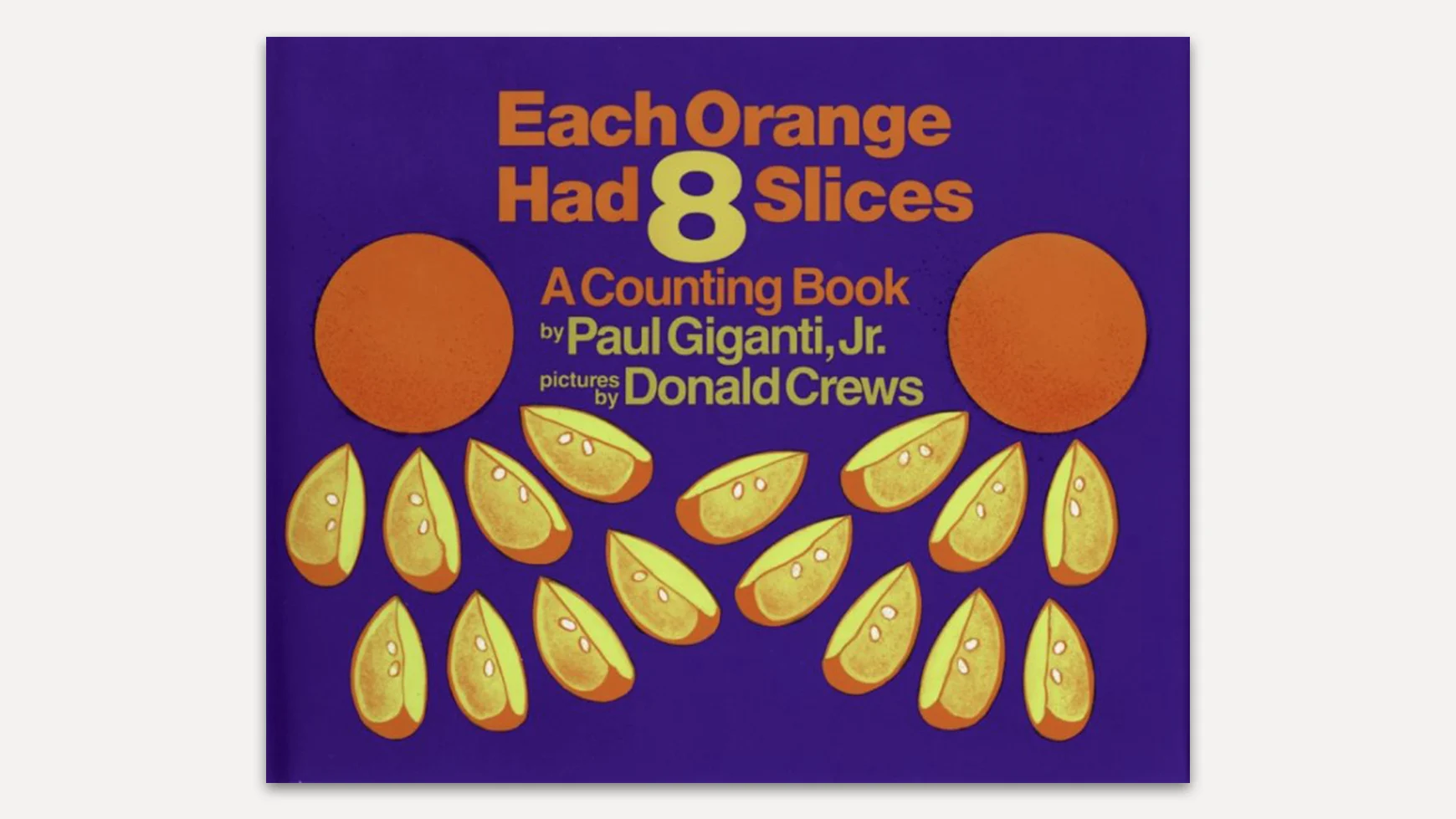6 books to help young kids build math skills
When kids read or hear about math in a story, it helps them build math skills in imaginative ways. Books about math show that numbers, patterns, and shapes are everywhere we turn. They can also motivate kids who don’t like math to get more excited about it.
Here are six books, mainly for kids from Pre-K through grade 3, that can help young kids build math skills.
Understood does not endorse or receive financial compensation for the sale of any of these products. To find more books for your child, explore the Book Finder tool from Understood founding partner Reading Rockets.

Each Orange Had 8 Slices: A Counting Book, by Paul Giganti Jr.
How many juicy oranges were there? How many slices were there? How many seeds were there in all? Each Orange Had 8 Slices: A Counting Book makes real-world math problems come alive by encouraging kids to figure out the answers in different ways. This book is good for counting with younger kids. It can also help older kids work on more advanced concepts, like repeated addition and multiplication.

The Greedy Triangle, by Marilyn Burns
In The Greedy Triangle, a triangle wants to look different. So the triangle asks the local “shapeshifter” to change him into a quadrilateral. Then into a pentagon, and so on. But when all is said and done, the triangle learns he’s happy being a triangle after all. Author Marilyn Burns, a math specialist, also shows readers how shapes relate to everyday objects, like a patch on a soccer ball.

One Is a Snail, Ten Is a Crab, by April Pulley Sayre and Jeff Sayre
This beach-themed book uses groups of feet to teach kids about counting. For example, the number 1 is a snail (yes, snails have one foot!), and 2 is a person. Three is a person and a snail, and 4 is a dog. It goes up to 10, which is a crab. The counting continues in multiples of 10 (20 is two crabs). One Is a Snail, Ten Is a Crab can help kids make the leap from counting ones to counting tens.

How Much Is a Million? by David M. Schwartz
In this book, the main character introduces kids to large numbers and quantities. Marvelosissimo the Mathematical Magician uses kids, stars, and fishbowls as measuring tools. “If a goldfish bowl were big enough for a million goldfish, it would be large enough to hold a whale,” he says. How Much Is a Million? can help kids understand the concept of large numbers in relatable ways.

12 Ways to Get to 11, by Eve Merriam
12 Ways to Get to 11 is a fun counting book that introduces kids to number combinations. There are 12 colorful examples of items that add up to 11. For instance, “six peanuts and five pieces of popcorn at the circus” make 11. So do “six bites, a core, a stem, and three apple seeds.”

Rooster’s Off to See the World, by Eric Carle
Award-winning author and illustrator Eric Carle captures the imagination of young readers in this book about addition and subtraction. A rooster goes off on an adventure and picks up two cats, three frogs, four turtles, and five fish along the way. There’s a handy counting grid on the upper corner of each page in Rooster’s Off to See the World. The grid can help kids understand addition as the rooster gathers up animal friends on his journey. It also teaches subtraction when the rooster and his friends realize it’s time to head home.
For more ways to have fun with math, explore around-the-house tools to use with your child.

